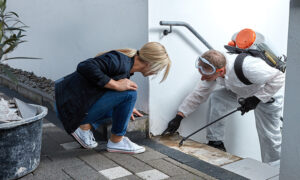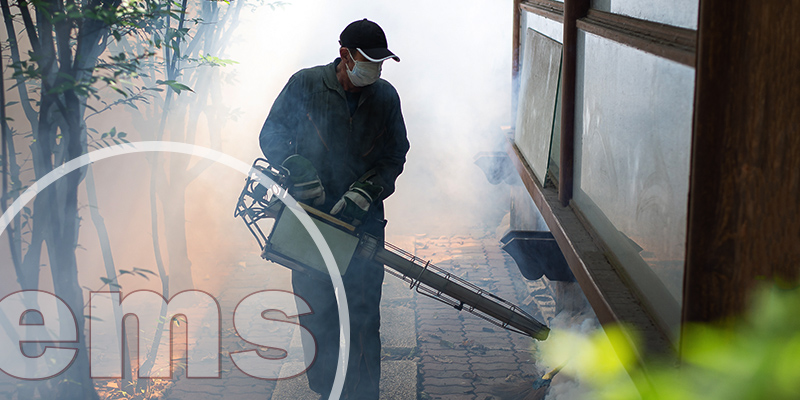Pest control in HOA communities is essential, especially in neighborhoods where residents live so closely with one another. Pests, such as insects and rodents, can easily spread from one house to the next. Before long, the entire association will have an infestation, with common areas also affected. Who should be responsible for pest control in the first place?
The Importance of Pest Control in HOA Communities
Pest problems are inevitable, no matter where you live. Community associations regularly face these issues. Single-family homes often deal with pests like squirrels, rats, raccoons, termites, and roaches. Some communities even struggle with rabbits, which damage gardens and landscaping.
Meanwhile, in condo associations, cockroach infestations are common and can quickly spread between units. These pests can also invade the common areas of the community.
Beyond being a nuisance, pests pose health risks and threaten structural integrity. The simple answer to this problem is to hire a pest control company. However, there is often some debate on who will cover the costs. Is the HOA responsible for paying for pest control? Or does that responsibility fall on the shoulders of homeowners?
Does the HOA Have HOA Pest Control Responsibility?
There is no universal answer to this question, as each state has different laws regarding pest control responsibilities. State laws should be the first point of reference to determine who should cover pest control costs.
More often than not, though, state laws don’t discuss pest control responsibilities. As such, the next place to turn is the association’s governing documents. Most of the time, the HOA’s CC&Rs cover who is responsible for maintenance, including pest control.
Typically, HOAs handle common areas, including lobbies, pools, fitness centers, and clubhouses. Meanwhile, homeowners must handle pest control for their own individual homes or units.
Some associations’ documents specify that whoever causes an infestation must bear the cost of pest control services. However, the cause of infestations is not always easily identifiable. There is usually no clear or direct cause.
In cases where a resident is responsible for the pest issue, the association must document the situation thoroughly. This documentation allows the HOA board to send appropriate notices to the responsible resident. If the resident does not stop the behavior causing the infestation, the association has the option to pursue legal action.
Can Homeowners Refuse HOA Pest Control?
 Some residents refuse HOA entry to address pest issues. However, this doesn’t mean the HOA has no options. The association must refer to state laws to understand its rights. The board must usually provide reasonable prior notice before entering an owner’s unit or home. Additionally, the entry must be for maintenance purposes.
Some residents refuse HOA entry to address pest issues. However, this doesn’t mean the HOA has no options. The association must refer to state laws to understand its rights. The board must usually provide reasonable prior notice before entering an owner’s unit or home. Additionally, the entry must be for maintenance purposes.
Sometimes, a resident may permit entry but disagree with the chemicals used for pest control. This usually happens if the resident prefers to use eco-friendly or organic products.
However, it can also arise from health concerns. For instance, if the resident has an allergy or condition preventing the use of certain chemicals, the association must accommodate their request. The Fair Housing Act supports such accommodations. The association should ask the residents which alternative material they prefer to address this issue.
Most Common Pests in HOA Communities
While pests come in all shapes and forms, some are more common among HOAs than others. Understanding these pests and how to get rid of them is an important step in pest control in HOA communities.
Rodents
Rodents cover a wide range of pests within an HOA community. These include rats, mice, gophers, and even rabbits. Communities located in larger cities usually have to handle rat control in HOAs. Gophers and rabbits are typically common in more rural areas.
If you have a rodent infestation in your HOA, then it is best to call a professional pest control company. In some places, local laws restrict how people can handle gophers and rabbits. For rat or mouse infestations, it is critical to trace the source of the problem and get rid of it at its root. If one home has a rat problem, there is a good chance that other homes also have the same problem.
Cockroaches, Mosquitoes, and Other Insects
Insects are another common pest in HOA communities. Cockroaches tend to be common in large cities, especially in condominiums. Mosquitoes are more common in rural areas or places with a stagnant water source nearby.
Residents can keep lavender, basil, or mint plants near windows to keep flies and mosquitoes out. However, if the infestation has already spread across the neighborhood, it is best to call on HOA mosquito control. As for cockroaches, prevention is typically better than cure. However, if the problem has already grown, it is time to contact a professional pest control company.
What to Include in HOA Pest Control Policy
Having a policy on managing pest control is critical for any homeowners association. Here are the things to consider regarding pest control in HOA communities.
1. Conduct Routine Inspections
Regular HOA inspections help identify wall cracks that pests might use to enter. This is especially important in common areas. On the other hand, residents are responsible for inspecting their own properties.
If a community association manager is available, they can arrange these inspections. Otherwise, the board can contact local professionals for assistance. An HOA inspection checklist can also be useful for listing everything that requires inspection.
2. Consider Smart Landscaping
Effective landscaping can include plants that repel pests, helping keep them away. Good landscaping also allows quick detection of infestations if they occur. Spring is ideal for enhancing landscaping to deter pests, but each season offers opportunities to manage HOA pest issues.
3. Perform Regular Maintenance
Maintaining buildings is essential to prevent pests from being used as nesting grounds. Trash is another attraction for pests, so residents dispose of it properly. If communal trash cans are available, ensure they are secure. This way, they don’t topple over and attract rodents.
Additionally, water maintenance is also important. Pools or lakes should have clean, flowing water to prevent insects from breeding.
4. Have a Relocation Plan
Pest infestations can sometimes escalate to a point where fumigation is necessary. This creates an additional challenge, as residents must find temporary accommodations during fumigation. Laws regarding who should cover relocation expenses vary by state.
Most residents are willing to relocate if the association pays temporarily. This way, they enjoy a brief change of scenery and return to a pest-free home.
Keep Pests Out
 Board members should clearly communicate each party’s obligations regarding pest control in HOA communities. Homeowners should know what they are responsible for and how to prevent pests. Similarly, the HOA board should understand that common areas fall under the association’s jurisdiction.
Board members should clearly communicate each party’s obligations regarding pest control in HOA communities. Homeowners should know what they are responsible for and how to prevent pests. Similarly, the HOA board should understand that common areas fall under the association’s jurisdiction.
Elite Management Services offers expert management solutions to HOAs and condo communities, including help with maintenance. Call us today at (855) 238-8488 or contact us online to learn more!
RELATED ARTICLES:
- Taking Care Of Community Common Area Maintenance
- Is Raising Chickens In HOAs Allowed?
- How To Deal With Hoarders In HOAs







